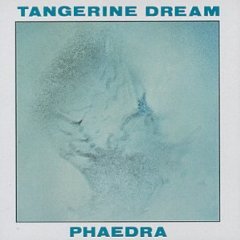 On February 20th, 1974, Tangerine Dream released the album that changed electronic music for the next 40 years. It takes its name from Greek mythology and its sound from the imaginations of Edgar Froese, Peter Baumann and Christoph Franke, the three members of Tangerine Dream at the time. Phaedra was their fifth album, coming on the heals of Atem in 1973 and Zeit in 1972. Both of those albums were abstract improvisations of floating sound fields. Zeit in particular was a minimalist, Ligeti-like exploration in texture and sustain with a mixture of electronics and a cello quartet. Phaedra had some of those elements, but on the side-long title track they were linked to sequencer grooves like rubber bands being twanged in space. It’s the sound you hear in every retro-space band, a lot of techno and dance hits like Donna Summers’ “I Feel Love.”
On February 20th, 1974, Tangerine Dream released the album that changed electronic music for the next 40 years. It takes its name from Greek mythology and its sound from the imaginations of Edgar Froese, Peter Baumann and Christoph Franke, the three members of Tangerine Dream at the time. Phaedra was their fifth album, coming on the heals of Atem in 1973 and Zeit in 1972. Both of those albums were abstract improvisations of floating sound fields. Zeit in particular was a minimalist, Ligeti-like exploration in texture and sustain with a mixture of electronics and a cello quartet. Phaedra had some of those elements, but on the side-long title track they were linked to sequencer grooves like rubber bands being twanged in space. It’s the sound you hear in every retro-space band, a lot of techno and dance hits like Donna Summers’ “I Feel Love.”
Tonight on Echoes, we celebrate the 40th Anniversary of Phaedra with commentary from several artists influenced by this recording. Moby, Ulrich Schnauss, Mark Shreeve, Ian Boddy, Robert Rich, Steve Roach, and Alan Howarth sing Phaedra’s praises and Edgar Froese reveals the thought behind the introduction of sequencers into the band. We’ll also hear two tracks off the album and a set of music from Tangerine Dream influenced artists. You can trip into space on Tangerine Dream’s Phaedra tonight on Echoes
Five years ago, I compiled a list of the 10 Best Tangerine Dream albums. Phaedra is at the top of that list. Here’s the rest.
10 Best Tangerine Dream Albums From Number Six of 20 Icons of Echoes
On the air I said I’d pick five, but I decided to go with ten.
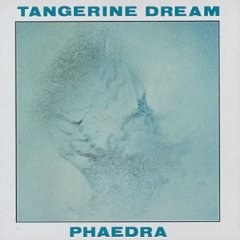 1-Phaedra
1-Phaedra
2-Rubycon
Phaedra and Rubycon have always been a pair for me and that pair is half of a quartet with Ricochet and Stratosfear. These are the signature Dream albums, the blueprint for every retro-space artist out there, the sound that influenced ambient, techno, and more. The classic trio of Edgar Froese, Christoph Franke and Peter Baumann found the secret of rubber band 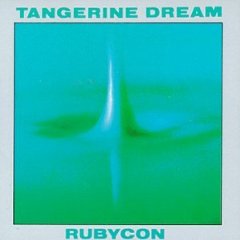 sequencer patterns discovered by Tonto’s Expanding Headband 2 years earlier. The Dream bound them in interlocking patterns, mellotron chords and synthesizer textures. Phaedra is transitional, retaining some of the avant-garde Ligeti-esque texturalism from Zeit on the mellotron drenched “Mysterious Semblance at the Strands of Nightmare,” but the title track and Rubycon, an album length composition were definitive journeys into inner space.
sequencer patterns discovered by Tonto’s Expanding Headband 2 years earlier. The Dream bound them in interlocking patterns, mellotron chords and synthesizer textures. Phaedra is transitional, retaining some of the avant-garde Ligeti-esque texturalism from Zeit on the mellotron drenched “Mysterious Semblance at the Strands of Nightmare,” but the title track and Rubycon, an album length composition were definitive journeys into inner space.
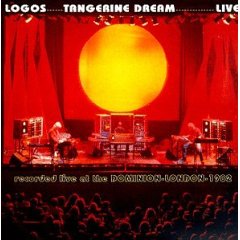 3-Logos
3-Logos
Tangerine Dream was an exciting live band in the 70s and half of the 80s. Listening to Logos, from 1982, you can hear why. This was the Dream working with a precision and structure that earlier works didn’t have, but they were still creating in long-form with a fair amount of improvisation. Johannes Schmoelling had been in the group for a while at this point and his influence is felt in gorgeous melodies and rhythms that have you ricocheting off your seat and between your headphone cups. This was really the truly last live recording from the group. Subsequent live albums would be more pre-programmed performances.
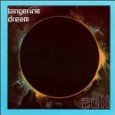 4-Zeit
4-Zeit
It’s been called their most experimental CD, but I think it’s their most thoughtful, controlled and uncontrived album. Playing with a cello quartet, it’s a journey of interwoven tones phasing through each other from acoustic to electric to something entirely new. Ambient before ambient, but owing much to Gyorgy Ligeti pieces like “Atmospheres,” synths, gliss guitar, organ and “noise generators” unfold in undulating, slow motion patterns across what was a double LP. This 1972 recording is a drone zone manifesto, and a beautifully enveloping work free of melody, rhythm and just about any other conventional music signpost.
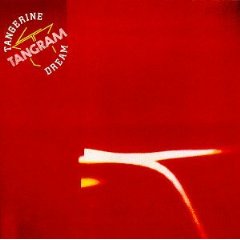 5-Tangram
5-Tangram
This is one of the last long-form Dream recordings. Originally a two sided work, Tangram is a multi-movement opus sometimes sabotaged by episodic writing, but still with some haunting themes amidst the pounding sequencers and more melodic invention than most prior Dream albums.
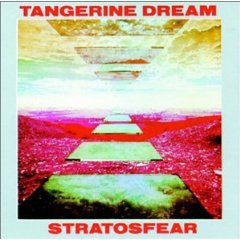 6-Stratosfear
6-Stratosfear
Part of the classic quartet of albums, this was their most commercial release to date and the first album with real melodies.
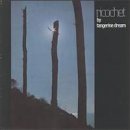 7-Ricochet
7-Ricochet
The other album in the classic quartet. Ricochet was their first live album, although it was all new materiel and sounds like a studio recording. Another two-sided excursion that moves from the quietest solo piano spot to thundering sequencers from the heavens.
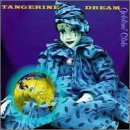 8-Goblins’ Club
8-Goblins’ Club
Goblins’ Club recalls the 80’s sound of Tangerine Dream when they were just adding more aggressive rhythms and clearly defined melodies to their fanciful spacescapes. But unlike so many of their post-Virgin releases, this 1996 albums doesn’t bludgeon you with canned synthesizer bombast. There seems to be more exploratory fun and a more personal sound as they drop in surreal free falls in the midst of their dramatic compositions.
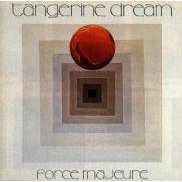 9-Force Majeure
9-Force Majeure
Something of an anomaly in that it features a drummer, Klaus Krieger, and gives the Dream a more fluid and aggressive sound, especially in the screaming side long title track.
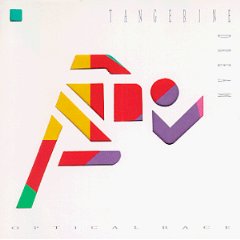 10-Optical Race
10-Optical Race
I know that consensus opinion has it that the Private Music years sucked, and they did, except for Optical Race the first album they made for the label, owned by former Tangerine Dreamer, Peter Bauman. With just Froese and Paul Haslinger, they create dense, rhythmically charged excursions that stand up to some of their best works and hold up better than albums like Le Parc.
Finally an album that should be on the list, Epsilon in Malaysian Pale, the third solo album from Edgar Froese and a Dream album by any other measure.
John Diliberto (((echoes)))
